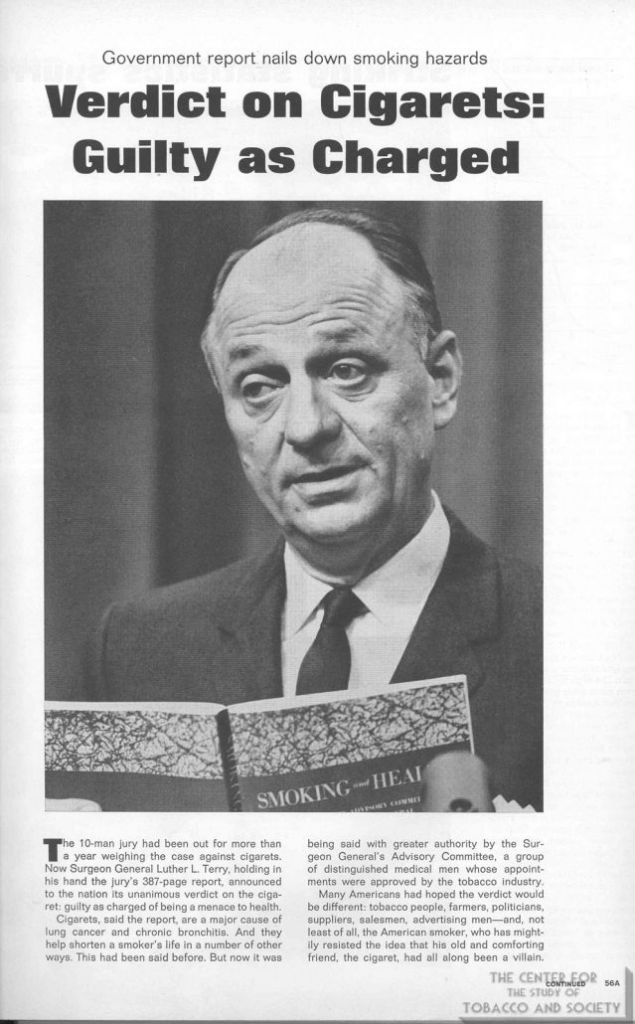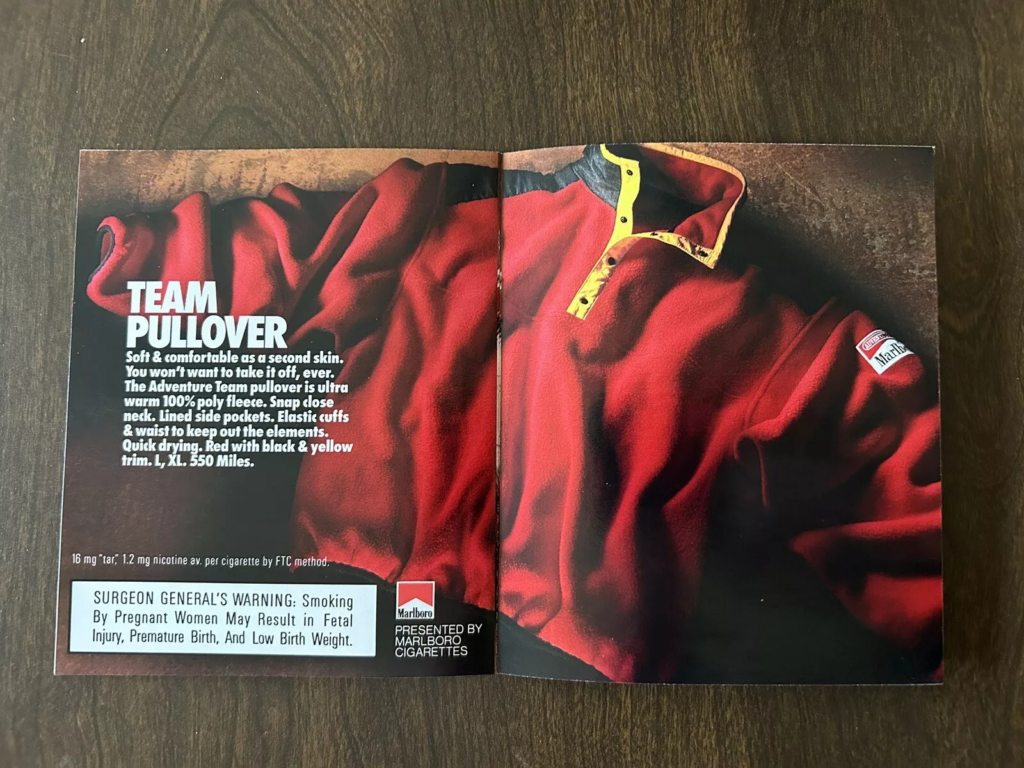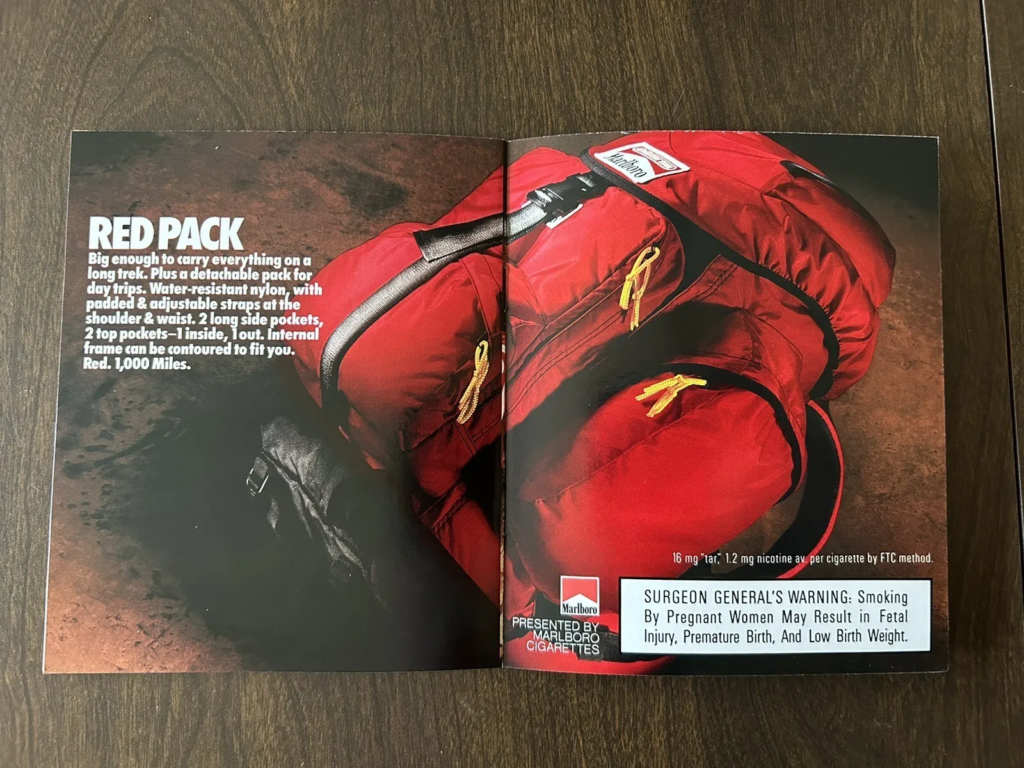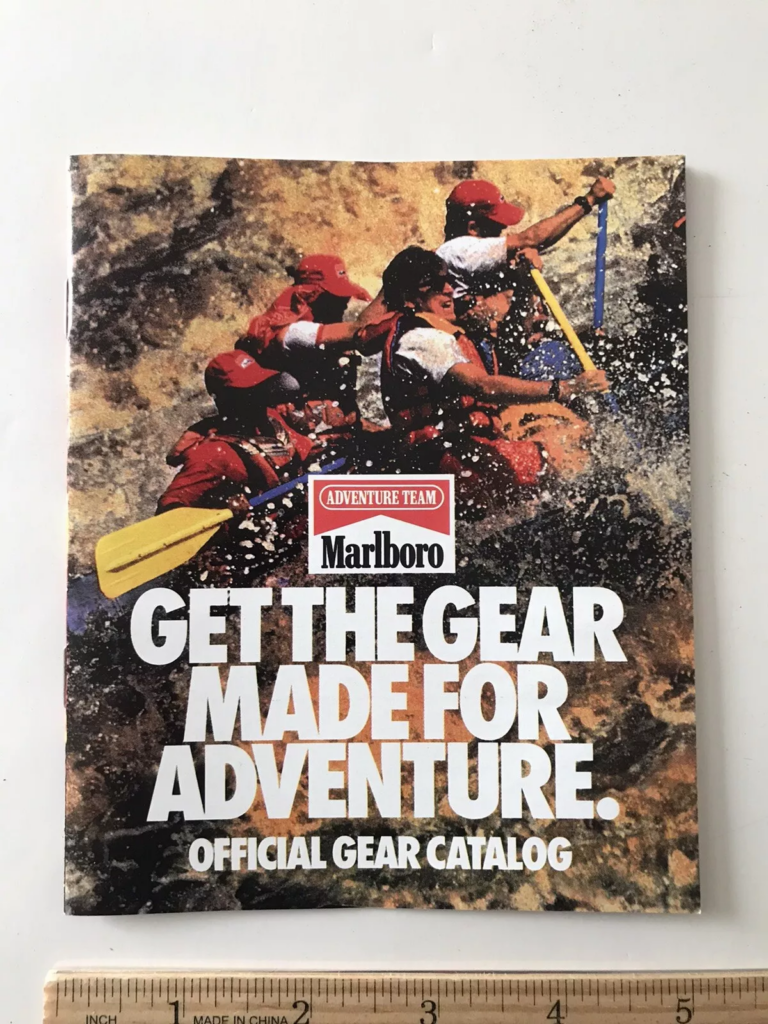Hey there, fellow marketing enthusiasts!
Today, let’s take a deep dive into the fascinating evolution of an iconic brand: Marlboro. Specifically, we’re going to explore their bold move in 1992 to shift away from the legendary Marlboro Man and embrace the fresh narrative of the Marlboro Adventure Team. Why is this pivotal moment in advertising history worth revisiting? Because it’s a perfect example of how a brand can evolve while still staying true to its essence, demonstrating that reinvention can ensure longevity.
Before we dive in, a quick disclaimer: This post is in no way an endorsement of smoking. The health risks of cigarettes are undeniable, and I applaud the public health campaigns that help individuals avoid developing these harmful habits. That said, as marketers, we can still appreciate the strategies and creativity that went into shaping one of the most memorable advertising icons in history.
The Mighty Marlboro: A Historical Overview
To truly appreciate Marlboro’s 1992 pivot, let’s take a step back and consider the historical significance of their brand. The Marlboro Man wasn’t just a cowboy; he represented rugged individualism, freedom, and the untamed spirit of the American West. Created by Leo Burnett in the 1960s, the Marlboro Man wasn’t just selling cigarettes—he was selling a lifestyle. Marlboro’s Marlboro Country became synonymous with masculinity and rebellion, deeply embedded in pop culture.
For decades, this image was a staple in American advertising. The stoic cowboy, cigarette dangling from his lips, became an aspirational figure for many. But as times changed, so did the way Marlboro needed to market itself.
Key Milestones in Marlboro’s Marketing Evolution:
- 1964: Surgeon General’s Report
Impact on Marlboro: Public awareness of smoking’s health risks increased. Marlboro shifted its focus to emphasize rugged masculinity and the aspirational lifestyle associated with the Marlboro Man, distancing the brand from the act of smoking itself.
- 1988: Comprehensive Smoking Education Act Government Action: Impact on Marlboro:Marlboro focused on experiential campaigns, such as the Marlboro Adventure Team (1992)—a loyalty program that invited customers to collect “Marlboro Miles” in exchange for branded gear and experiences. This campaign reinforced the adventurous, independent image of the brand while engaging existing customers.


1992: The Marlboro Adventure Team – A Bold New Era

In 1992, Marlboro sought to adapt to changing consumer preferences with the innovative Marlboro Adventure Team campaign. Moving away from the iconic Marlboro Man, this campaign embraced the spirit of modern-day adventure. It offered consumers a chance to participate in a thrilling 600-mile expedition across Colorado and Utah, involving activities such as hiking, biking, rafting, and horseback riding. The campaign, designed to align with evolving market demands, redefined the brand’s approach to engage with audiences seeking active and rugged experiences.
The campaign’s global appeal was evident in the1994 Marlboro Adventure Team Challenge, which included participants from countries such as Malaysia, Korea, Hong Kong, and Taiwan. In Malaysia, over 1,000 applicants vied for the chance to represent their country in the 10-day trek through the American West. The contest featured an intensive selection process involving essays, interviews, and a grueling obstacle course that tested endurance, skill, and teamwork. Only the best earned the coveted spots to explore the wilderness of Wyoming, Colorado, Nevada, and Arizona.

The adventure wasn’t just about winning—it celebrated resilience and the spirit of adventure. Participants braved challenging routes, from kayaking and rock climbing to dirt biking and horseback riding, across some of the most breathtaking landscapes in the U.S.
I discovered some fantastic archival shots of the Marlboro Adventure Expedition from 1994, particularly highlighting the Malaysian Marlboro Adventure Team. This remarkable event was part of the Marlboro World of Sports initiative and was sponsored by Philip Morris, with creative direction by Leo Burnett, Ltd. The team included notable participants such as Ho Chiu Wah, Ching Neng Bin, and Azizi Bin Sha’arani.

The adventure was valued at RM 35,000 per participant and became a once-in-a-lifetime journey, creating memories of camaraderie and triumph. From Turping Meadow Ranch to the MGM Grand in Nevada, the expedition exemplified the thrill of conquering the great outdoors, leaving a lasting legacy of Marlboro’s bold and adventurous branding.

Reinventing a Classic Brand

Philip Morris, Marlboro’s parent company, was acutely aware of the changing landscape of the market and understood that they needed to reinvent the brand to stay relevant. However, the challenge was clear: how could they modernize the brand without losing the core values that had made Marlboro a household name for decades? The solution came in the form of the Marlboro Adventure Team campaign—a bold and strategic move aimed at connecting with a new generation of consumers. This campaign sought to tap into their growing desire for adventure and exploration while still preserving the essence of rugged individualism that had defined Marlboro for years. Instead of relying on the iconic image of the solitary cowboy, the Marlboro Adventure Team encouraged consumers to become active participants in the Marlboro lifestyle. It wasn’t just about watching someone live the life you aspired to—it was about experiencing it for yourself.
The shift was a transformative moment for the brand. For nearly thirty years, the Marlboro Man had been the face of Marlboro—a symbol of masculinity, freedom, and the untamed spirit of the American West. The stoic cowboy, cigarette in hand, had become a cultural icon. But as the world and consumer preferences evolved, so too did Marlboro’s need to stay relevant in a market that was rapidly changing. By the early 90s, the traditional cowboy imagery no longer resonated with the younger, more active generations who were drawn to more contemporary experiences—adventure, exploration, and engagement with the world around them.
The decision to retire the Marlboro Man was not a rejection of the past. Rather, it was a strategic evolution, breathing new life into a brand that had already established itself as an American institution. The Marlboro Adventure Team campaign represented a shift in focus from the static image of a lone cowboy to the dynamic world of active participation. Marlboro wasn’t just selling a product anymore—they were selling an experience, a lifestyle, a way of life that invited consumers to live boldly and engage with the world around them. This move allowed Marlboro to maintain the core values that had always been central to its identity—ruggedness, independence, and freedom—while positioning itself for the future.
In many ways, it was a risky move for a brand that had relied on a single, iconic figure for so long. But by evolving with the times, Marlboro ensured that it could remain relevant, exciting, and connected to a new generation of consumers. The Marlboro Adventure Team campaign injected fresh energy into the brand and reinvigorated its legacy, proving that even the most established brands must be willing to evolve to stay ahead.
The Marketing Strategy Behind the Shift
What made the 1992 campaign so effective?
- Adapting to Shifting Consumer Behavior
The 90s were a different world than the 60s or 70s. Consumer preferences were changing. Marlboro wasn’t just selling cigarettes; they were selling an experience. The shift from aspirational imagery to adventure appealed to a younger audience who sought experiences over products. - Brand Consistency with a Modern Twist
The Adventure Team campaign stayed true to Marlboro’s core values of ruggedness and freedom, but the execution was updated. It appealed to a younger, more active audience while retaining the essence of the brand that made it iconic. - Engagement and Participation
The campaign wasn’t just about watching others live the Marlboro lifestyle. It invited consumers to become part of that adventure. This participatory approach engaged the audience in a deeper way than traditional passive advertising. - Experience Over Product
Marlboro pivoted from simply promoting the product itself to promoting the experience tied to the brand. This focus on lifestyle, adventure, and emotional connection remains a key strategy in modern marketing. - Big Investment, Big Impact
The campaign was costly—over $200 million—but it was necessary to maintain Marlboro’s dominant position. With placements in major publications like Vanity Fair, Spin, and Interview, Marlboro ensured they reached a wide, targeted demographic.
Aligning with Adventure Brands
Interestingly, Marlboro’s Adventure Team campaign also parallels the marketing strategies of adventure-focused brands like Patagonia and The North Face, who were making waves in the 90s. These brands, much like Marlboro, tapped into the idea of adventure, exploration, and ruggedness—but in their own way.

Targeting Active Lifestyles: Both Patagonia and The North Face focused on consumers who embraced active outdoor lifestyles—hiking, skiing, climbing, and more. Similarly, Marlboro’s Adventure Team shifted its focus to active adventure experiences, offering a chance to explore the rugged American landscape. All three brands appealed to a generation that was more interested in real-world adventure than in the nostalgic cowboy imagery of the Marlboro Man.
Appealing to Values Beyond the Product: Just as Patagonia and The North Face marketed more than just products—they marketed a lifestyle of environmentalism, personal exploration, and freedom—Marlboro’s 1992 campaign aimed to market an adventurous spirit rather than simply a cigarette. Marlboro, like these outdoor brands, promoted the idea of living a life full of bold experiences.

Cultural Trends: The rise of the “experience economy” in the 90s shifted consumer interests toward experiences over products. This cultural change influenced both Marlboro and outdoor brands. While Patagonia and The North Face emphasized the value of adventure and the outdoors, Marlboro took it a step further by making its customers active participants in that narrative through its Adventure Team contest.
Brand Positioning: Patagonia and The North Face positioned themselves as authentic, environmentally-conscious brands. Marlboro’s decision to pivot from the traditional cowboy to a more modern, adventure-driven narrative reflected a similar effort to stay relevant and maintain its connection with consumers. All three understood the importance of aligning their brand with values their customers could identify with—whether it was environmentalism or the spirit of adventure.

Though not directly influencing one another, Marlboro’s 1992 campaign embodied the cultural and marketing spirit that outdoor adventure brands like Patagonia and The North Face had long embraced. At its core, this shared approach revolved around creating an emotional connection with consumers by tapping into their aspirations, values, and desire for belonging.
Marlboro’s campaign, while promoting cigarettes, transcended the product itself by evoking the thrill of adventure and the allure of rugged, untamed landscapes. Similarly, Patagonia and The North Face built their brand narratives around exploration, sustainability, and the pursuit of personal challenges in the great outdoors. These brands recognized that consumers were not just buying a product; they were investing in a lifestyle and a set of ideals.
For Marlboro, this meant aligning the brand with freedom, individuality, and the adventurous spirit of the Marlboro Man. For Patagonia and The North Face, it meant fostering communities of environmentally conscious adventurers and promoting responsible exploration. In both cases, the marketing strategies went beyond the transactional to create enduring emotional ties. By appealing to deeply held values and offering consumers a sense of shared identity, these campaigns cultivated loyalty that outlived fleeting trends, proving the power of value-driven branding in building lasting relationships with consumers.
Final Thoughts
In the world of marketing, staying stagnant is a surefire way to fall behind. Marlboro’s 1992 Adventure Team campaign shows how a brand can evolve without sacrificing its identity. By shifting the focus from the Marlboro Man to modern adventure, Marlboro stayed relevant and culturally significant, ensuring it could continue to speak to new generations.
What do you think of Marlboro’s move to reinvent the cowboy? Do you believe it was a step forward in modern marketing, or did the absence of the Marlboro Man leave a void that couldn’t be filled? I’d love to hear your thoughts—drop them in the comments!
As a final note: This is not a cigarette endorsement. Everyone should make their own informed decisions, but let’s keep the conversation respectful.
Thanks for reading, and remember—there’s always room for innovation and evolution in marketing. Keep pushing the boundaries!
Cheers,
Lewis
Works Cited:
Elliott, Stuart. “The Marlboro Man Is Missing in Action in New Campaign.” The New York Times, 23 Oct. 1992, https://www.nytimes.com/1992/10/23/business/media-business-advertising-marlboro-man-is-missing-in-action-in-new-campaign.html.
“1964 Surgeon General’s Report.” Centers for Disease Control and Prevention (CDC), https://csts.ua.edu/ama/1964-surgeon-generals-report/.
Ching Neng Bin. “1994 Marlboro Adventure Team USA.” Ching Neng Bin Blog, 22 Dec. 2008, https://chingnengbin.blogspot.com/2008/12/1994-marlboro-adventure-team-usa.html.



